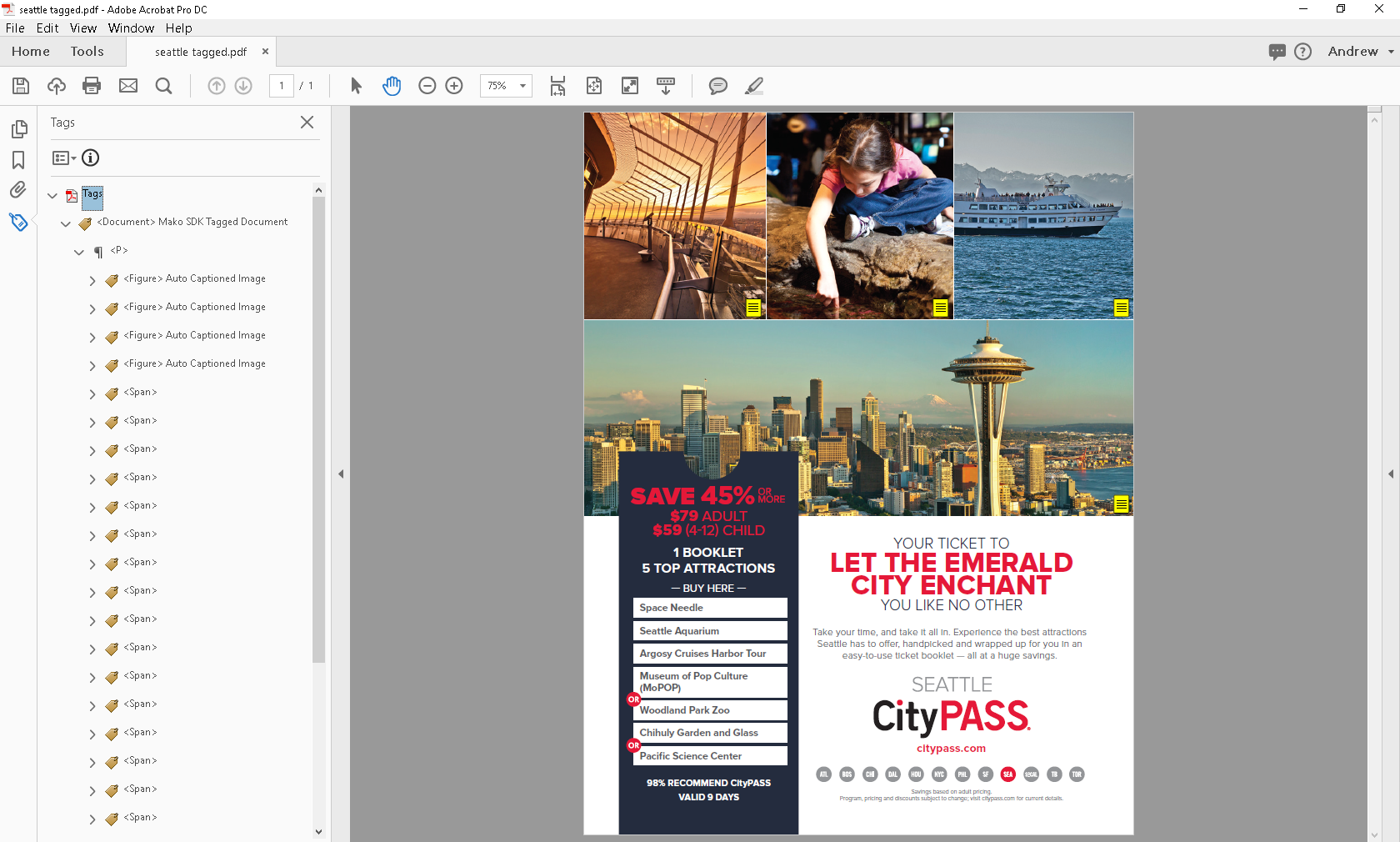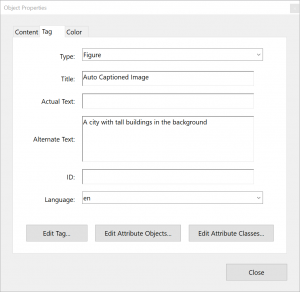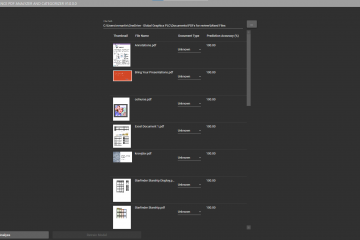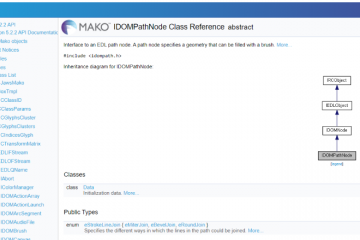I’ve finally got my hands on the pre-release of Mako 4.4, and I’m excited to say that it comes with a brand new structure tagging API.
Following on from my earlier post about AI and content searching, I’ve been waiting for this release to take it a step further. In my last post, I used AI from Microsoft’s Cognitive Services for adding an annotation next to image in a PDF, containing a textual description of the image.
Now that we have the new structure tagging API in Mako, we can now create a structure tag element containing the alternative text for the image. This is awesome because it now allows screen readers, such as Jaws, to describe the image to a blind or partially sighted user.
What else can we Structure Tag?
Taking a step back, PDF documents are a fixed format document. This means you can create them once, and they should (aside from font embedding or rendering issues) look identical across machines. This is obviously a great thing for ensuring your document looks great on your user’s devices, but the downside is that some PDF generators can created fixed content that is ordered in a way that is hard for screen readers to understand.
Luckily we also have an API for page layout analysis. This API will analyse the structure of the PDF, and using various heuristics and techniques, will group the text on the page together in horizontal runs and vertical columns. It’ll then assign a page reading order.
Now we have a structure tagging API, it makes is easy to take the layout analysis of the page, and use it to tag and structure the text. So while we’re tagging the images, we’ll tag the text too!
Mako’s Structure Tagging API
Mako’s new structure tagging API is fairly simple to use. Our architect has done a great job of taking the complicated PDF specification and they’ve distilled it down to a a number of useful APIs.
Let’s take a look at how we use them to structure a document from start to finish.
Setting the Structure Root
Setting the root structure is straight forward. First, we create an instance of IStructure and set it in the document
Next we create an instance of a Document level IStructureElement and add a that to the structure element we’ve just created.
One thing that I learnt the hard way, is that Acrobat will not allow child structures to be read by a screen reader if their parent has alternative (alt) text set.
Add alternate text only to tags that don’t have child tags. Adding alternate text to a parent tag prevents a screen reader from reading any of that tag’s child tags. (Adobe Acrobat help)
Originally, when I started this research project, I had alt text set at the document level, which caused all sorts of confusion when my text and image alt text wasn’t read!
Using the Layout Analysis API
Now that we’ve structured the document, it’s time to structure the text. First we want to understand the layout of the page. To do this, we use IPageLayout. We give it a reference to the page we want to analyse, then perform the analyse on it.
Now the page has been analyzed, it’s easy to iterate through the columns and nodes in the page layout data.
Tagging the Text
Once we’ve found our text runs we can tag our text with a span IStructureElement. We append this new structure element to the parent paragraph created while we were iterating over the columns.
We also tag the original source Mako DOM node against the new span element.
Tagging the Images
Once the text is structured, we can structure the images too.
If you remember from the last post, we used Microsoft’s Vision API to take the images in the document and give us a textual description of them. We can now take this textual description and add it to a figure IStructureElement.
Again, we make sure we tag the new figure structure element against the original source Mako DOM image.
Notifying Readers of the Structure Tags
The last thing we need to do is set some metadata in the document’s assembly, This is straight forward enough. Setting this metadata helps viewers to identify that this document is structure tagged.
Putting it all Together
So, after we’ve automated all of that, we now get a nice structure, which, on the whole, flows well and reads well.
We can see this structure in Acrobat DC.

And if we take a look at one of the images, we can see our figure structure now has some alternative text, generated by Microsoft’s Vision API. The alt text will be read by screen readers.

Figure properties dialog
It’s not perfect, but then taking a look at how Adobe handles text selection quite nicely illustrates just how hard it is to get it right. In the image below, I’ve attempted to select the whole of the title text in Acrobat.

Layout analysis is hard to get right!
In comparison, our page layout analysis seems to have gotten these particular text runs spot on.
But how does it fair with the Jaws screen reader? Lets see it in action!
So it does a pretty good job. The images have captions automatically generated, there is a sense of flow and most of the content reads in the correct order. Not bad.
Printing Accessible PDFs
You may remember that the Mako SDK comes with a sample virtual printer driver that can print to PDF.
I want to take this one step further and add our accessibility structure tagging tool to the printer driver. This way, we could print from any application, and the output will be accessible PDF!
In the video below I’ve found an interesting blog post that I want to save and read offline. If I were partially sighted, it may be somewhat problematic as the PDF printer in Windows 10 doesn’t provide structure tagging, meaning that the PDF I create may not work so well with my combination of PDF reader and screen reader.
However, if I throw in my Mako based structure and image tagger, we’ll see if it can help!…
Of course, your millage will vary and the quality of the tagging will depend on the quality and complexity of the source document. The thing is, structural analysis is a hard problem, made harder sometimes by poorly behaving generators, but that’s another topic in its self. Until all PDF files are created perfect, we’ll do the best we can!
Want to Give it a Go?
Please do get in touch if you’re interested in having a play with the technology, or just want to chat about it. If you just want to ping me a message, I’m also on twitter @andrewcardy.


